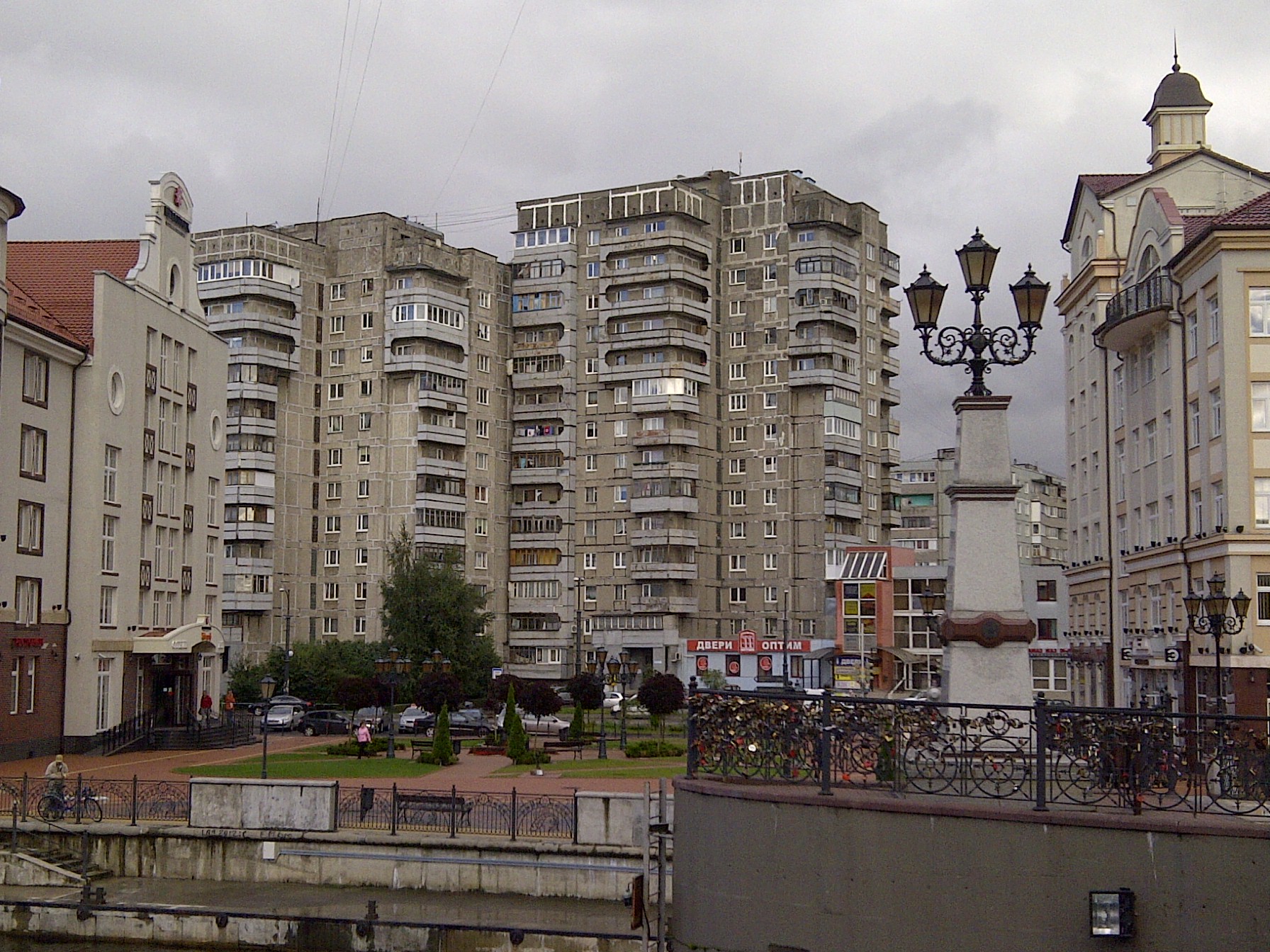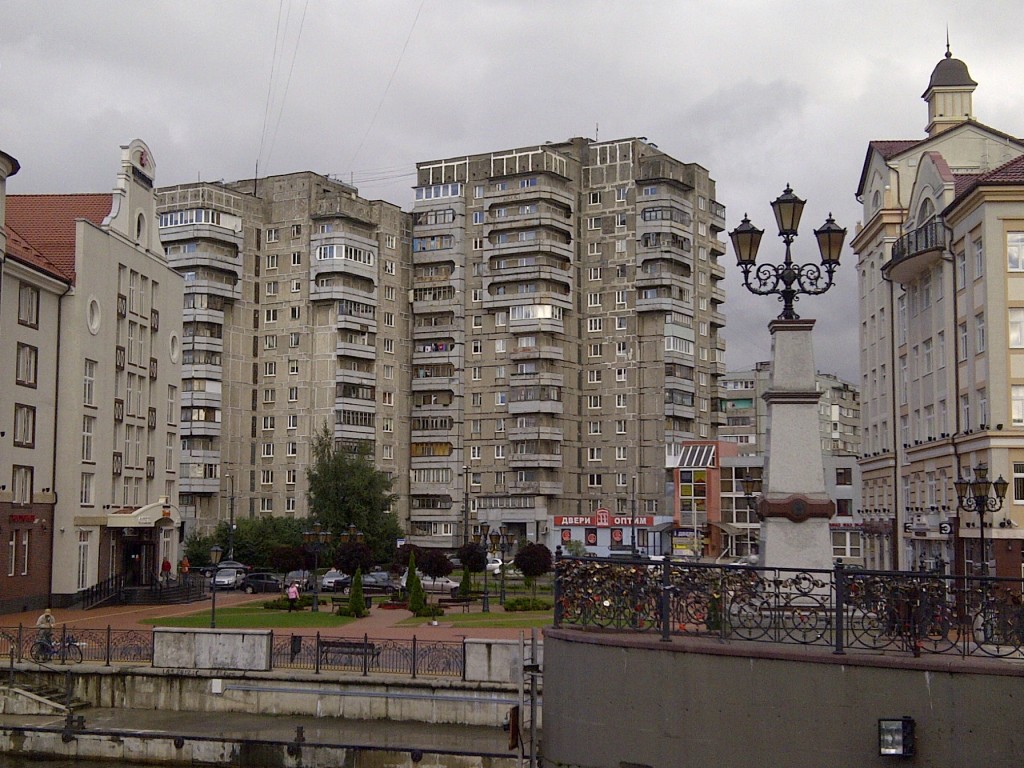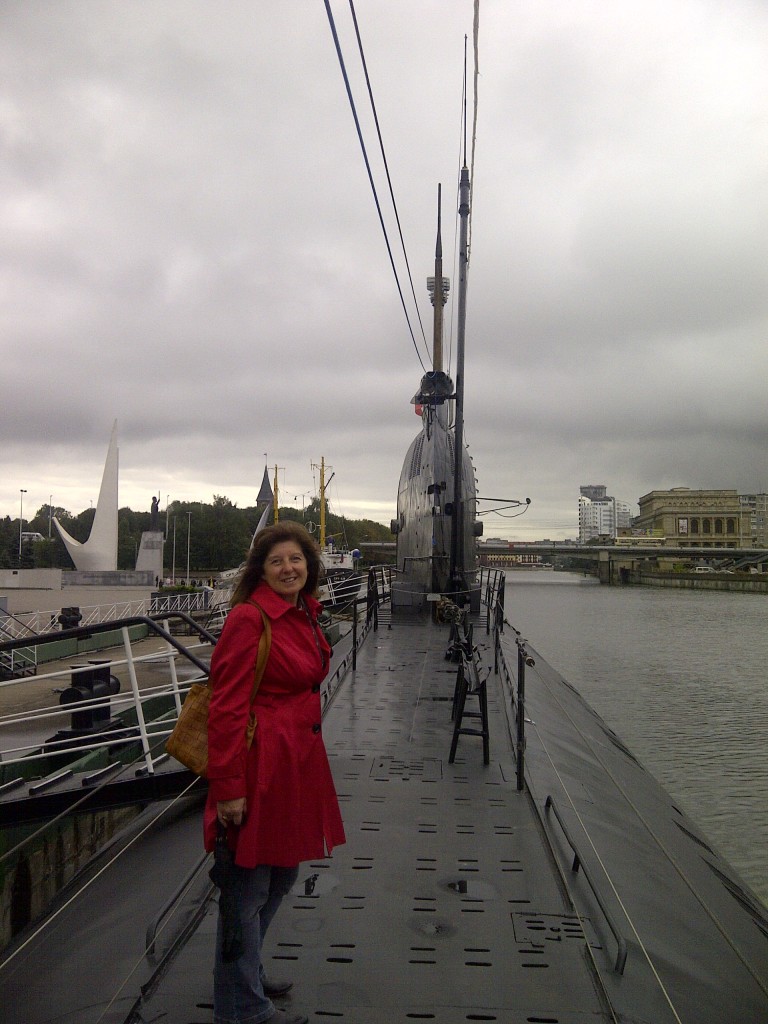
Another swift border crossing into Russia, briefly threatened by a surly border guard shouting at us as her colleague had forgotten to give us a piece of paper with a stamp on for her, saw us arriving at Kaliningrad in early afternoon. The roads were brand new from the spit to the Moscow road, absolutely nothing to do with Putin having a villa built in the spit, and the hotel actually had a camping area with hookups by a lake! We were so on a high we decided to go into the city that evening for a wander around and perhaps a meal.
The taxi ride was, as is the custom in Russia, terrifying and we were let out rather appropriately at the new cathedral where we immediately took refuge from the deluge and gave thanks for our miraculous accident free ride.
Konningsberg one of, if not the most beautiful of the Hanseatic league towns, it’s winding cobbled streets lined with typical German buildings, gorgeous cafes and restaurants, a huge castle and wonderful cathedral, rivers and parks, boat trips and trams, it really doesn’t get much better than this. Sadly the only person who will ever see this now is Doctor Who in his Tardis. Its completely appropriate that the city was renamed by the Russians when they annexed these German lands after the war as it would be an insult of monumental proportions to call it by its old name now as almost all of the original city has vanished.
Kaliningrad is not picturesque to say the least, it has about 5 things to see (it used to have 6 but Brezhnev blew up the castle in the centre of the town in 1969 to make way for a still unfinished “House of the Soviets” an incredibly ugly building). and all of these are pre communist things.
Early in 1945 the RAF virtually destroyed the city in an 800 bomber raid and in the final days of the war the German garrison fought defiantly against the Russians withstanding enormous artillery barrages and hand to hand fighting before finally surrendering.
Unlike many West Germany cities the Soviets made little effort to restore the city, looking at it now and knowing they expelled all the Germans left in the city and re populated it with Russians, you feel they may have actively tried to eradicate any trace of its German history.
Many Germans visit the city and it’s not uncommon for those who lived here prior to 1945 to break down and cry when they see it today, perhaps for them this is just because of the emotion of returning, but both Linda and I felt a similar thing and we have seen many desolate Soviet cities in our time.
We have never been anywhere that left us so upset before that we even had difficulty sleeping. Visiting museums and even concentration camps show the horror of war but they all do so at a distance and from the past. They give you the ability to skip bits if they are too upsetting or you’re running out of time but Kaliningrad doesn’t. It’s there, right in front of you, whichever way you turn you cannot escape the grey drab disaster of a city, it is a hugely powerful anti war statement all on its own. The friedland gate museum here let’s you take a walk though the old city using pre war film and pictures and you can then do the same walk for real today and not see a single building from the film.
Kaliningrad is ghastly. Like all Soviet cities its streets are 6 lane race tracks laced with potholes, the paths are decrepit and the buildings lining them are uniformly bleak and decaying. There seems to be only two designs for a housing block throughout the city and they haven’t been painted in decades, the balconies are sagging and rusted and are often boarded up with corrugated sheets. There are large areas of abandoned ground, particularly in the centre and of course the abandoned House of the Soviets sits right in the middle of all this as a testament to the stupidity of both wars and communism. Everything revolves around the car (ostensibly the reason the castle was blown up) and just to cross the road often involves a long walk to a crossing and then back again on the other side. Apparently in 1990 the Russians offered to give Kaliningrad back to Germany and the Germans didn’t want it and you can see why.
Since the fall of communism however the city has made efforts to improve. The cathedral and one of the walls gates have been restored and a reproduction quay side has been built. At the moment these oasis of architecture and reminders of the past seem to shout “What have you done?” to the rest of the city. But there are plans to rebuild the castle and who knows, perhaps in 40 years Koningsberg may begin to emerge from Kalliningrad.
Of the tourist things to do here the top two are to visit the bunker where the Germans surrendered which we did – interesting and absolutely stinking of vodka, and visit the World Ocean Museum, a collection of boats and aquariums with the highlight for us going on a ‘Foxtrot’ class submarine moored at the quay. One of these Foxtrot submarines captains wanted to Nuke the American fleet when they depth charged him during the cuban crisis and we are all only here today because two of his subordinates managed to persuade him not to.
After having said all of this surprisingly We are both still really glad we came here! It’s made us both realise even more how lucky we are to live in the west and it’s highlighted what a positive difference the EU makes to developing the former Soviet countries. The Baltic countries are simply unrecognisable from Russia and we think a lot of this is down to the help provided by the EU and the trade boost provided by open borders.
Back to civilisation (again) next…






Hi,
I’m Karolina from Lithuania, a country that has a border with Kaliningrad. It was a real pleasure to read this post – not because of the things that are written here, but because of your understanding of all the soviet drama and horror. They did a horrible, terrible thing in Kaliningrad, and also in other countries that they had occupied. Lithuania, together with Latvia and Estonia, is slowly healing the wounds… But it will take time to fully recover – not only in terms of economy or architecture, but also the mindset of people.